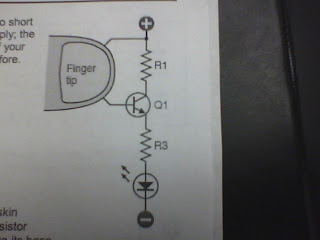2/27/2013
When learning about electric circuit, lots of elements are assumed to be ideal to simplify calculations. However, ideal case rarely occurs in real conditions. The cables in any circuit have internal resistance that consume the power supplied by the batteries. Pouillet's Law stated that electrical resistance of any substance is proportional to its length and cross-section-area, R=pL/A, where p is the electrical resistivity (a constant).
In designing a circuit with the load seperated far away from the power source, the maximum permissible stretch or the cable (or wire) must be determined so that there will always be a substantial voltage across the load after consumption by the cable.
The goal for this lab was to determine the maximum stretch of AWG#30 cable between the battery and load by determining the permissible cable resistance. Meanwhile, the team would also determine the distribution efficiency and the approximate discharging time of the battery by taking these assumptions:
1) The Load is rated to consume 0.144W when supplied 12V.
2) The Load will operate properly as long as voltage across it is greater than 11V.
3) Battery voltage will remain constant at around 12V and it has a capacity of 0.8Ahr.
By using P = V^2 /R, the resistance of the load was calculated to be 1000ohm. A resistance box of 1W power rating would be used instead of the cables to determine the permissible resistance.
A model of the circuit was first constrcuted to test the equipemts as well as the connections.
The 1000ohm resistor serving as the load had a measured value of 980ohm and wattage at 0.125W.
Color Code
|
Nominal Value
|
Measured Value
|
Within Tolerance?
|
Wattage
|
Black-Black-Black-Brown
|
1000 ohm
|
980 ohm
|
No, off by more than 1%
|
1/8 Watt
|
(Resistor Box)
|
94 ohm
|
90 ohm
|
Yes, within 1%
|
1 Watt.
|
The power supply supplied 12.10V instead of the 12V, and the maximum supply current is 2A.
After starting the experiment with the actual circuit with ammeter connected, the resistance in the resistance box was 84ohm as the voltage across the load is dropped to 11V. The current was measured to be 11.44mA.
Data Calculation:
a) With the Amp-hour capacity rating of the battery (0.8Ahr) and the current in the circuit (11.44mA) known, the discharge time could be calculated as:
0.8Ahr = 11.44mA * t
t = 69.93hr
for which it would take the battery close to 70hrs to discharge.
b) The power to the load and the power to the cable could be calculated by P = I^2 * R where I was same for both load and cable, and R was individual resistance.
Power to the Load = (11.44mA)^2 * 1000ohm = 0.131W
Power to the Cable = (11.44mA)^2 * 84ohm = 0.011W
Distrubution efficiency = Pload / (Pload + Pcable) *100 = 92.25
c) The power capability of the resistor box was not exceed because the box's rating was at 1W while the power it adsorbed was only at 0.011W.
d) Given that the resistance of AWG#30 is 0.35ohm/m, the maximum distane of between the battery and the load can be calcuated as:
84ohm = 0.3451ohm/m * 2L
L = 121.70m
e) If instead of using AWG#30, AWG#28. The signal through this tether were 20mA 5V TTL. The longest length of #28 wire that could be used while keeping the signals within sspec would be:
5.0V - 2.6V = 20mA * R
R = 2.4 / 20mA
L(212.9 ohm/km) = 2.4 / 20mA
L = 563.64m
distance/2 = 563.64m
distance = 281.82m
Which mean the load can be at max a distance of 281.82m from the power source and it will take around 564m of AWG#28 wire.
f) If, in the robo-sub project, 48 volts at 10A was sent down to the sub. 36 volt must reach the sub so that the voltage regulator will stay within regulation. The minimum cable guage that could be used for the project was:
48V = IR + 36V
12V = 10R
R = 1.2ohm
let the tether be 60ft:
r = 1.2ohm / 60ft = 0.02ohm/ft
AWG#22 would be the minimum cable that could be used.
End of Lab 1














































